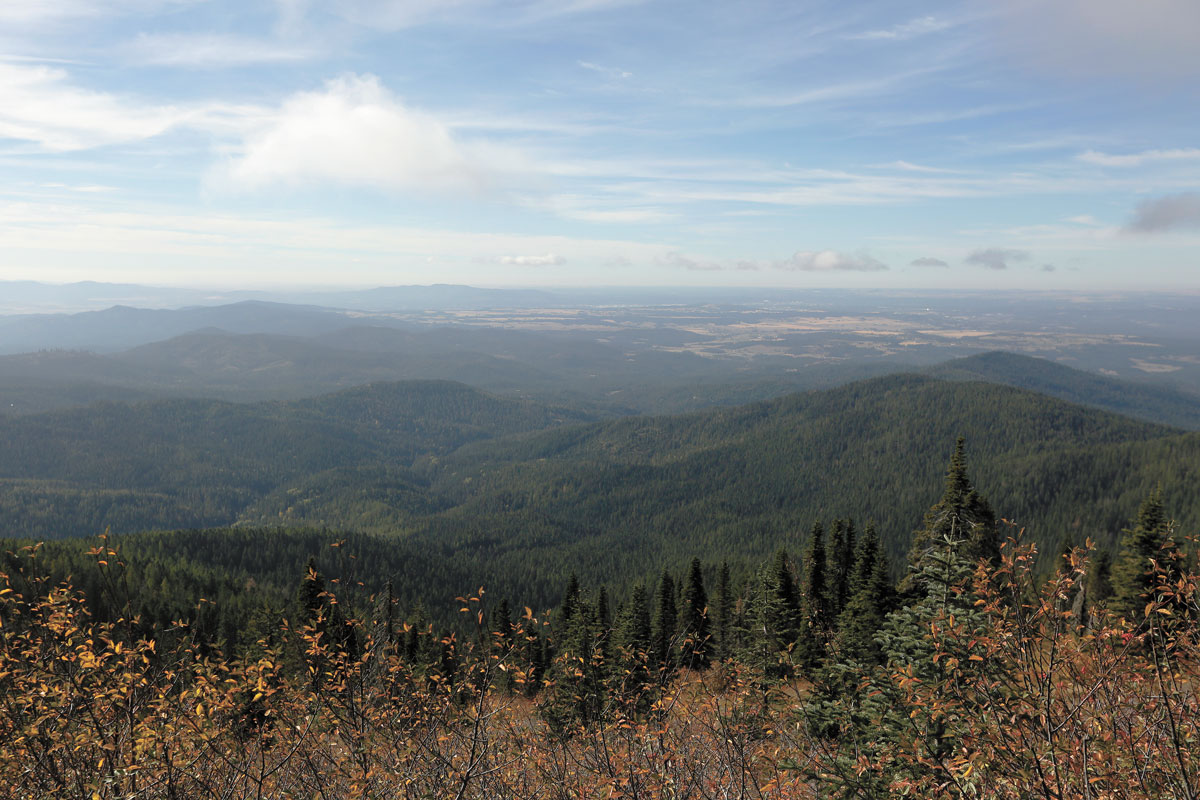
MOUNT SPOKANE STATE PARK
Spokane’s natural environment and outdoors industry offer myriad ways to get out of the house
Just because it’s winter doesn’t mean you have to be stuck inside. Our region offers ample opportunities to explore, from weather-dependent activities like skiing to endeavors that simply require a slight seasonal adjustment.
Fishing, for example, easily adapts for year-round enjoyment, says Sean Visintainer of SILVER BOW FLY SHOP, whose slogan is “Making fish nervous since 1988.”
The Spokane River is one of the best cold weather fisheries around, says Visintainer.
“The river temps stay warmer than other waters, it never freezes, has plenty of access, and you don’t have to travel far!” Check Silver Bow for gear, then check out more recommendations — the fly shop’s crew members love to share their expertise — including Rocky Ford Creek, a year-round spring creek in central Washington, and the Snake River for steelhead.
SPOKANE PARKS & REC is another trusted name in outdoor activities. Find a park to explore on their website, my.spokanecity.org/parksrec, which lists more than 120 regional parks, community centers and aquatic facilities.
Their winter activity guide includes both cross-country skiing and snowshoeing, where you can learn and explore with area experts like Cris Currie, author of several guidebooks on Spokane-area skiing.
“The best route for beginning snowshoers at Mount Spokane is the Lower Kit Carson Loop Road to Smith Gap and the snowshoe hut,” says Currie, who will lead several skiing and snowshoe classes for Spokane Parks & Rec this winter.
“There is a Sno-Park lot right across from the trailhead, 1.8 miles up from the park entrance. Trail 100 can be used for the return route and is single-track.”
Of course Parks & Rec has kids’ programs, too, like during winter break for ages 9-12 at Mount Spokane State Park.
With hundreds of miles of biking, hiking and horse trails, MOUNT SPOKANE STATE PARK has been a mecca for outdoor enthusiasts since opening in 1927. In the winter, get your Sno-Park permit, register the sled and go explore 18 miles of groomed snowmobiling area. Work for it with Nordic or alpine skiing, as well as snowshoeing.
Or head over to nearby MT. SPOKANE SKI AND SNOWBOARD PARK, which is ready for winter with skiing and snowboarding lessons, rentals and lift tickets. Check out the Ladies Only clinics through March 2021.
And although Mt. Spokane Ski and Snowboard Park is not offering tubing this season, they recommend fun-seekers seek out BEAR CREEK LODGE, also in Mead, for an excellent time slipping and sliding your way through winter.
For that all-important winter gear, skiers and boarders should head to SHRED SPORTS OUTLET, DICK’S SPORTING GOODS, REI SPOKANE or the SPOKANE ALPINE HAUS, which boasts more than 40 years in the biz.
Done with that equipment or looking for the most affordable way to ease into the winter sport season? Check out PLAY IT AGAIN SPORTS for pre-owned gear that fits your shoe size and your budget.
Visit either SPORTSMAN’S WAREHOUSE location (Spokane Valley and Spokane) and NORTH 40 OUTFITTERS for a range of outdoor gear, like binoculars, for a low-impact winter activity that will have you seeing the Northwest in a whole new light.
This is a perfect time to get outside to go BIRDWATCHING, specifically ducks, says Alan McCoy, president of the Spokane Audubon Society, who describes the quackers as “some of the most beautiful birds on the planet in their very freshest and brightest plumage.”
McCoy recommends Mount Spokane, Liberty Lake, Iller Creek, Stevens Creek in general and this handy guide from Audubon Washington: wa.audubon.org/birds/great-washington-state-birding-trail. If you’re specifically looking for ducks, geese or swan, try Slavin Conservation Area, Turnbull National Wildlife Refuge or the Spokane River.
“Even though waterfowl are out in the open and just ‘sitting ducks,’” says McCoy, “when humans approach they will gradually make their way to the other side of the lake or river or abruptly fly away to another spot even farther away.” The best way to view them is a slow and careful approach, leaving the pooch at home and limiting your talking to a whisper.
You’ll need good binoculars for general birdwatching, says McCoy, but for watching waterfowl, he recommends a spotting scope or a camera with a good zoom lens. Another helpful tool: free, downloadable apps that help you identify what you’re seeing.
“But you don’t have to have anything at all to appreciate these wonderful creatures,” says McCoy. “You just need to get outside to a nearby lake or river and watch and listen!”

